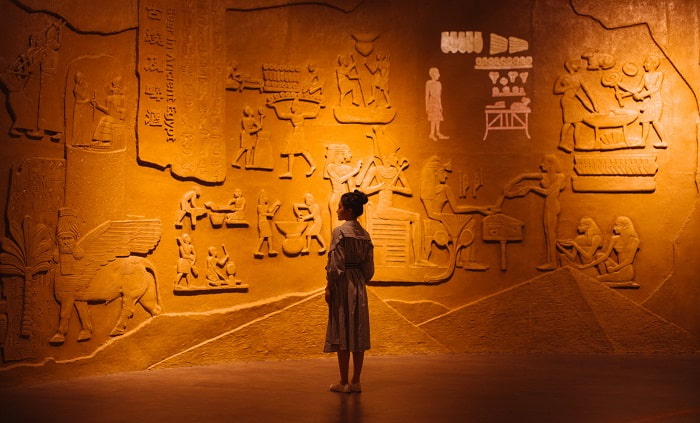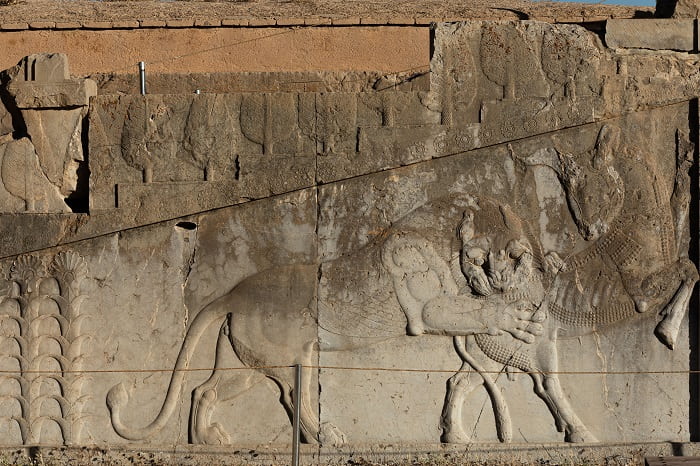
Welcome, intrepid readers, to a captivating journey through the annals of history where whispers were encrypted, messages concealed, and secrets guarded with the utmost diligence. In the age of knights and castles, where the clatter of armor echoed through medieval landscapes, a clandestine world of communication unfolded. In this article, we delve into the enigmatic realm of medieval encryption methods, unveiling the ingenious tactics employed during a time when kingdoms rose and fell, and information was as coveted as the gleam of a knight’s armor.
Embark on a quest through the labyrinthine corridors of monastic scriptoria, where monks wielded quills as their swords and safeguarded knowledge like precious treasure. Witness the dance of ciphers and the birth of the venerable Caesar cipher, a cryptographic relic from an era when coded messages traversed battlefields and royal courts. Uncover the secrets hidden within the illuminated manuscripts, where the ink told tales both visible and obscured.
Journey alongside historical figures like Al-Kindi, a cryptic trailblazer from the Persian world, and Leon Battista Alberti, a Renaissance polymath who left an indelible mark on the art of secrecy. Explore the role of espionage and disguises in times of war, where messengers navigated treacherous paths to deliver tidings shrouded in coded mystery.
But this is not merely a historical odyssey; it is a bridge to the present. Discover the challenges faced by medieval cryptographers, resonate with the echoes of strategic communication in battles such as the iconic Battle of Agincourt, and unravel the timeless thread connecting the encryption methods of yore to the cybersecurity challenges of today.
So, dear reader, prepare to be enthralled by the captivating tapestry of medieval encryption methods—a tapestry woven with threads of secrecy, innovation, and the enduring allure of the cryptographic arts. In the following pages, the past beckons, and the lessons learned from these ancient enigmas reveal their relevance in our modern quest for secure communication. Are you ready to unlock the secrets of the medieval cryptographic tapestry? The journey begins now.
Table of Contents
History of Medieval Encryption Methods

As the medieval period unfolded, communication became an intricate challenge due to the decentralized political landscape and the perilous nature of travel. The absence of a centralized governing authority led to the dominance of feudalism, with its intricate hierarchy of lords, vassals, and serfs. Land ownership and agricultural production were pivotal to sustaining the medieval economy during this era, which was divided into the Early, High, and Late Middle Ages.
The decentralized nature of governance during this time meant that rulers, diplomats, and envoys faced significant challenges in maintaining effective communication. The difficulties in transportation, combined with the lack of a structured messenger system, prompted the need for innovative methods to transmit information securely.
In the absence of sophisticated communication technologies, medieval societies relied on messenger systems inherited from ancient civilizations. The Persian Empire’s messenger system and the relay-runner system of the Inca state served as inspirations, but as the Roman Empire dissolved, Western Europe transitioned from state messengers to private arrangements made between groups and individuals.
Messengers, often working freelance, became essential figures in disseminating information across vast distances. Rulers, bishops, nobles, towns, universities, monasteries, and trading companies employed trusted individuals for this crucial task. The best messengers were not only physically fit and healthy but also possessed knowledge of multiple languages, a valuable skill for navigating the diverse linguistic landscape of medieval Europe.
Transportation played a crucial role in messenger systems, with pack animals like asses, mules, and horses being common choices. The selection of animals depended on factors such as terrain and the social status of the traveler, with wealthier individuals favoring horses for their speed and strength.
The need for secrecy in communication, especially during sensitive times like war, led to the development of encryption methods. Messages were often encoded to protect sensitive information, and messengers adopted innocent disguises to avoid detection. Information could be concealed in various items, such as clothing, walking staff, or even shoes. These encryption methods added a layer of security to communication in an era where information was a valuable commodity and the consequences of interception could be dire.
In conclusion, the medieval period witnessed a complex interplay of political, social, and cultural changes, and effective communication was a constant challenge. The reliance on messengers, the use of pack animals for transportation, and the development of encryption methods reflected the innovative ways in which medieval societies tackled the intricate task of conveying information across vast and often hazardous landscapes.
Communication Challenges in Warfare and Diplomacy
Communication in medieval warfare and diplomacy faced an array of challenges, intricately woven into the technological, cultural, and social fabric of the time. As the wheels of history turned, the medieval era grappled with complexities that shaped the way messages were transmitted and strategies were devised. Let’s delve into the nuanced landscape of communication challenges during this period, exploring the limitations that colored the interactions of kingdoms and empires.
Limited Speed and Range of Communication:
The pulse of medieval communication echoed through messengers traversing landscapes by foot, horse, or ship. The lack of advanced transportation meant messages embarked on journeys laden with time constraints, navigating vast distances and challenging terrains.
Reliance on Written Messages:
In a society where literacy was a privilege, the written word emerged as a vital tool for conveying critical information. Yet, the exclusive skill of scribes and the slow process of document replication restricted the widespread dissemination of written messages.
Vulnerability to Interception and Tampering:
The absence of secure communication channels rendered messages vulnerable to the prying eyes of rivals. Seals and signatures provided a semblance of security, but the looming threat of forgeries underscored the delicate nature of confidentiality.
Limited Coordination and Centralized Control:
Medieval societies, with their feudal structures and local authorities, presented a mosaic of challenges in coordinating large-scale military endeavors. The lack of centralized control fostered fragmented communication, impacting the synchronization of strategies.
Reliance on Visual and Auditory Signals:
Flags fluttered, banners unfurled, and smoke billowed as visual signals danced across medieval battlefields. Yet, these signals, though effective for conveying simple messages, faltered in the face of complexity. Auditory signals, too, resonated through horns and drums, orchestrating actions during sieges.
Lack of Standardized Communication Protocols:
Unlike the standardized protocols of today, medieval societies grappled with inconsistent methods for encoding and decoding messages. The diverse languages spoken across regions necessitated interpreters in diplomatic negotiations, adding layers of complexity.
Limited Knowledge and Awareness:
Leaders, bereft of real-time information, navigated the murky waters of decision-making with outdated or incomplete data. The absence of modern intelligence-gathering methods left them grappling with uncertainty, making it challenging to anticipate the machinations of adversaries.
In summary, the tapestry of communication challenges in medieval warfare and diplomacy was woven with the threads of technological constraints, resulting in a communication landscape that was slower, less secure, and more limited compared to contemporary methods. As we reflect on this historical backdrop, we gain insights into the intricate dance of power, strategy, and information that shaped the medieval world.
Rise of the Need for Secret Communication
The rise of the need for secret communication in the medieval era can be attributed to several factors:
- Security Concerns: As mentioned in the first text, medieval times were marked by political instability, wars, and conflicts. Rulers, diplomats, and envoys needed to send messages containing sensitive information related to strategies, alliances, and other state affairs. To ensure the security of these messages, encryption and coded forms of communication became essential.
- Limited Trust in Messengers: In a society where messengers often worked on a freelance basis, carrying messages for various sources, there was a risk of information being intercepted or misused. The need for secret communication arose as individuals and groups sought ways to protect their messages from unauthorized access or manipulation by competing messengers or potential spies.
- Risk of Espionage: The medieval world was not only marked by conflicts between kingdoms but also by espionage and intelligence gathering. Using coded messages and secret communication methods helped in minimizing the risk of valuable information falling into the wrong hands, especially during sensitive times such as war.
- Secrecy in Diplomacy: Diplomats and envoys engaged in delicate negotiations often needed to communicate discreetly. Secret communication allowed them to discuss terms, strategies, and alliances without revealing their intentions to potential adversaries or rivals. The use of coded messages and discreet messengers helped maintain confidentiality in diplomatic affairs.
- Protection of Trade Secrets: In addition to political and military matters, trade and commerce were vital aspects of medieval society. Merchants, guilds, and trading companies engaged in long-distance transactions and needed to protect their trade secrets. Secret communication ensured that valuable information about routes, goods, and business strategies remained confidential.
- Illiteracy and Dependence on Scribes: As highlighted in the second text, the majority of people in medieval Europe were illiterate. This created a dependence on scribes for written communication. To maintain the confidentiality of messages, individuals had to carefully choose trustworthy scribes and consider the language and dialect used in the written communication.
- Expensive Nature of Written Communication: The process of writing messages was expensive, involving the services of professional writers, costly materials such as parchment, and the use of seals. This expense further emphasized the need to ensure the secrecy of the communicated information, justifying the investment in the written message.
In summary, the rise of the need for secret communication in the medieval era was driven by a combination of security concerns, limited trust in messengers, the risk of espionage, diplomatic discretion, protection of trade secrets, illiteracy, and the expensive nature of written communication. It reflects the complex and challenging communication landscape of the time, where maintaining confidentiality was crucial for political, economic, and strategic interests.
Traditional Medieval Encryption Methods

Traditional encryption methods in the medieval era involved a variety of techniques, primarily centered around ciphers and codes, as well as steganography. These methods were essential for securing messages and protecting sensitive information. Let’s delve into two prominent encryption techniques from that time: the Caesar cipher and steganography methods such as invisible ink.
A. Ciphers and Codes:
1. Caesar Cipher:
The Caesar cipher stands as one of the oldest cryptographic algorithms known in history. Named after Julius Caesar, this mono-alphabetic substitution cipher involves replacing each letter in the plaintext with the letter found a certain number of positions later in the alphabet. Julius Caesar typically used a key of 3, meaning each letter was shifted three positions to encrypt the message.
Usage in Ancient Rome: Julius Caesar and Augustus employed the Caesar cipher in their correspondence, with Caesar often using a key of 3 for military communications. The simplicity of the cipher made it effective in an era where opponents struggled to read plaintext, let alone encrypted messages.
Vulnerabilities: Over time, ciphers like the Caesar cipher became vulnerable to frequency analysis, especially since they operate on a simple letter substitution basis. Despite its historical significance, the Caesar cipher is no longer considered secure for modern communication.
2. Atbash Cipher:
The Atbash cipher is another ancient substitution cipher that involves replacing each letter with its reverse in the alphabet. For example, ‘A’ becomes ‘Z,’ ‘B’ becomes ‘Y,’ and so on.
B. Steganography:
1. Hidden Messages in Art and Literature:
In addition to ciphers, medieval encryption involved steganography, the art of concealing messages. Artists and writers used various techniques to embed hidden meanings in their works. For instance, a seemingly innocent image or poem might contain a concealed message accessible only to those with the knowledge of the hidden code.
2. Invisible Ink and Concealed Writing:
Invisible ink was a practical method of hiding messages, with its use dating back centuries. Various recipes offered different methods, such as using a solution of green vitriol (copperas or ferrous sulfate) to write an invisible message. To reveal the message, one would apply a solution of oak gall extract, causing the writing to turn black. Milk was also used as invisible ink, drying with a subtle sheen and revealing the message when exposed to heat.
Recipe for Invisible Ink:
- Mix ferrous sulfate (copperas) in water to create an invisible writing solution.
- To reveal the message, apply a solution of oak gall extract, causing the writing to turn black.
- Alternatively, whole milk could be used, drying with a sheen and revealing the message when exposed to heat.
In conclusion, traditional encryption methods in the medieval era were characterized by ciphers like the Caesar cipher and steganography techniques involving hidden messages and invisible inks. While these methods may seem rudimentary by today’s standards, they were effective for their time and played a crucial role in securing sensitive information.
The Role of Monasteries in Medieval Encryption Methods

A. Monastic scriptoria as centers of knowledge:
Monastic scriptoria were not merely repositories of knowledge but dynamic centers that played a crucial role in preserving and disseminating intellectual wealth during the medieval era. In the aftermath of the decline of the Roman Empire, monasteries emerged as invaluable sanctuaries for the written word. At a time when literacy was a rare skill, monks, who were often among the privileged few with the ability to read and write, took on the vital task of copying and preserving significant texts.
These monastic scriptoria were more than mere writing rooms; they functioned as dedicated workshops, meticulously equipped with writing materials, parchment, quills, and other essential tools. The meticulous process of transcribing manuscripts was a laborious but essential undertaking in these scriptoria. Monks engaged in the patient art of copying, ensuring that the knowledge contained within various texts endured the passage of time.
While the primary focus of monastic scriptoria was on copying religious texts, such as the Bible, liturgical works, and theological treatises, these diligent monks also played a pivotal role in the preservation of classical works. Greek and Roman writings, rich in ancient wisdom, found a new lease on life as monks diligently transcribed and safeguarded these intellectual treasures.
Beyond their role in preservation, monastic scriptoria were integral to the cultural transmission of knowledge across generations. The act of copying manuscripts was not a mechanical task; rather, it involved a deep engagement with the content. Monks, through their dedication to this scholarly endeavor, contributed significantly to the intellectual vibrancy of the monastery. The scriptoria thus served as conduits through which knowledge flowed from one generation of monks to the next, fostering a continuous tradition of learning.
Among the most remarkable products of monastic scriptoria were the illuminated manuscripts, where the written word was elevated to an art form. Masterpieces like the Lindisfarne Gospels and the Book of Kells emerged from the skilled hands of these monks. These illuminated manuscripts combined intricate and exquisite artwork with religious texts, creating transcendent works of both aesthetic and intellectual value.
In essence, monastic scriptoria were not merely transcription centers; they were vibrant hubs of intellectual activity where knowledge was preserved, curated, and transmitted, contributing significantly to the cultural and intellectual landscape of the medieval world.
B. Monks as scribes and cryptographers:
Monks, revered for their dedication to both spiritual and intellectual pursuits, played a pivotal role as scribes and cryptographers in monastic communities. Within the tranquil walls of monastic scriptoria, these learned individuals engaged in the meticulous task of transcribing and illuminating manuscripts, demonstrating not only their commitment to preserving knowledge but also their remarkable skills in calligraphy and artistic expression.
In the realm of cryptography, some medieval monks exhibited a surprising proficiency in the art of encoding information. This cryptic dimension of their work often surfaced in colophons, the notes appended to the conclusion of manuscripts. Employing various techniques such as simple substitution ciphers, monks ingeniously concealed messages within these encoded passages. These hidden missives, at times, delved into personal matters or provided insights into the circumstances surrounding the manuscript’s creation, adding an intriguing layer of mystery to the written record.
One notable example of encrypted manuscripts is found in the encoded colophon of Ælfsige. Here, the adept use of cryptographic methods is evident as the monk employed intricate substitutions to veil the intended message. Similarly, Hygeburg adopted a distinctive approach by utilizing ordinal numbers or dots to replace vowels, showcasing the diverse and creative methods employed by medieval scribes to safeguard the confidentiality of their encoded communications.
Beyond their spiritual duties, these monks emerged as unsung heroes of information security in an age long before the advent of modern cryptography. Their dual roles as scribes and cryptographers not only contributed to the preservation of historical texts but also highlighted the intellectual depth and versatility of those who devoted their lives to the monastic way. In decoding the encrypted nuances within these manuscripts, contemporary scholars are granted a fascinating glimpse into the intricate and multifaceted world of medieval monasticism.
In summary, monastic scriptoria were essential centers for the preservation and transmission of knowledge, with monks serving as skilled scribes who sometimes engaged in the art of cryptography, adding a layer of intrigue to their manuscripts.
Famous Historical Figures and Medieval Encryption Methods

A. Al-Kindi and the Persian Contribution to Cryptography:
Al-Kindi, a distinguished Persian scholar hailing from the 9th century, left an indelible mark on the realm of cryptography, particularly in the domain of cryptanalysis through his pioneering work in frequency analysis. His seminal contributions are meticulously documented in the treatise titled “Risāla fī Istikhrāj al-Kutub al-Mu’ammāh” (On Extracting Obscured Correspondence), wherein he elucidates a systematic method for decrypting ciphers by examining the frequency distribution of letters.
Within his treatise on cryptanalysis, Al-Kindi advocates for a strategic approach to decipher encrypted messages, contingent upon knowledge of the language in question. His proposed methodology involves acquiring a distinct plaintext sample in the same language, conducting a comprehensive tally of each letter’s frequency, and subsequently substituting the symbols within the ciphertext based on their respective frequencies. This innovative technique, recognized as frequency analysis, swiftly emerged as a cornerstone in the decipherment of codes and ciphers.
Al-Kindi’s intellectual journey was significantly shaped by the profound influence of earlier scholars such as al-Khalil, whose magnum opus, the Book of Cryptographic Messages, introduced the concepts of permutations and combinations. This pioneering work aimed to enumerate all conceivable Farsi words, both with and without vowels. Al-Kindi, building upon this foundation, expanded the horizons of cryptographic exploration. His meticulous efforts not only solidified the importance of frequency analysis but also laid the groundwork for subsequent advancements in cryptography.
Al-Khalil’s insightful exploration of permutations and combinations provided Al-Kindi with a framework to systematically list all potential variations of Farsi words, enriching the field with a comprehensive approach to cryptographic analysis. Al-Kindi’s amalgamation of these principles with his groundbreaking frequency analysis technique became a watershed moment, establishing a paradigm that would influence the trajectory of cryptographic methodologies for centuries to come.
In essence, Al-Kindi’s profound contributions, intertwined with the rich legacy of Persian scholarship, not only illuminated the path for contemporaneous cryptanalysts but also laid a robust foundation for the evolution of cryptographic techniques. His legacy endures as a testament to the intricate interplay between theoretical ingenuity and practical application in the ancient art of secret communication.
B. The Legacy of Leon Battista Alberti:
Leon Battista Alberti, a Renaissance polymath from the 15th century, left a lasting legacy not only in architecture and art but also in the realms of cryptography and encryption. Alberti’s diverse talents ranged from literature to architecture, and his impact on the development of perspective in painting is well-known.
In the field of cryptography, Alberti made notable contributions by introducing the polyalphabetic cipher, which he detailed in his work on cryptographic methods. The polyalphabetic cipher, a revolutionary advancement in the art of secret writing, involved the use of multiple substitution alphabets. This innovation greatly enhanced the security of encoded messages, as compared to traditional monoalphabetic ciphers. Alberti’s meticulous documentation of this cryptographic technique laid the foundation for later developments in the field.
The ingenious device associated with Alberti’s polyalphabetic cipher is the cipher wheel, a mechanical apparatus that facilitated the implementation of this encryption method. The cipher wheel allowed users to easily shift between different alphabets, adding a layer of complexity to the encoding process and thereby enhancing the overall security of communication. This device became a precursor to later cryptographic machines and played a pivotal role in the evolution of cryptographic tools.
Beyond his cryptographic endeavors, Alberti’s intellectual breadth extended to the realm of geography. His treatise on geography not only delved into the principles of surveying and mapping land areas but also significantly influenced the accuracy of geographical depictions in the 15th and 16th centuries. This intersection of cartography and cryptography showcased Alberti’s interdisciplinary approach, highlighting his ability to integrate practical and theoretical aspects seamlessly.
One of Alberti’s noteworthy collaborations was with the Florentine cosmographer Paolo Toscanelli, a partnership that had a lasting impact on the Age of Exploration. Their combined efforts resulted in providing Christopher Columbus with a map crucial for his first transatlantic voyage. Alberti’s expertise in geography, coupled with Toscanelli’s cosmographic knowledge, played a crucial role in shaping the navigational understanding of the time.
In essence, Leon Battista Alberti’s contributions to the Renaissance extended far beyond his architectural and artistic achievements. His pioneering work in cryptography, exemplified by the polyalphabetic cipher and the cipher wheel, showcased his innovative mindset and foresight. Furthermore, his influence on geography and cartography underscored his ability to bridge practical applications with theoretical knowledge, making him a key figure in the intellectual landscape of the Renaissance. Alberti’s multidisciplinary legacy continues to be celebrated as a testament to the interconnectedness of knowledge and the transformative power of intellectual curiosity.
C. Joan of Arc and Secret Codes in Wartime Communication:
Joan of Arc, a French heroine born in 1412, played a pivotal role in the Hundred Years’ War between England and France. While not directly involved in encryption or cryptography, her actions had significant consequences for wartime communication.
Joan’s divine mission, as she claimed, involved stopping the siege of Orleans and aiding Prince Charles in reclaiming the French throne. Her victories at Orleans and Patay inspired the French army, leading to a shift in the momentum of the war. These successes had a profound impact on communication strategies, both in terms of boosting morale and altering the course of military operations.
The Burgundians, who later captured Joan, were allies of the English. Joan’s trial included accusations of heresy, sorcery, and idolatry, but her defiance during the proceedings showcased her resilience. The Church’s attempt to discredit her and the political implications of her visions highlight the interconnectedness of religious and political power during this period.
While Joan of Arc’s story does not directly involve the use of secret codes, her influence on the outcome of the war indirectly shaped the communication strategies of the conflicting parties. The shift in momentum prompted a reassessment of military tactics and communication methods. Leaders on both sides began to recognize the importance of inspiration and morale in maintaining effective communication within their armies.
Joan’s unwavering determination and her role as a symbol of resistance bolstered French morale, fostering a sense of unity among troops. This shift in the psychological aspects of warfare emphasized the role of effective communication in maintaining the cohesion of military forces.
Furthermore, Joan’s capture and subsequent trial showcased the political maneuvering and power dynamics of the time. The accusations of heresy and sorcery were not merely religious in nature; they were tools employed by political adversaries to undermine her influence and legitimacy. This underscores the intricate relationship between religion and politics during the period, where both were wielded as instruments of power.
Joan’s rehabilitation as a martyr and later recognition as a saint further solidified her historical importance. Her legacy became intertwined with the emerging narrative of French nationalism. As a symbol of courage and resistance, Joan of Arc continued to inspire generations, leaving an indelible mark on the cultural and historical identity of France.
In conclusion, while Joan of Arc’s story may not directly involve cryptographic methods, her impact on communication strategies during the Hundred Years’ War was profound. Her ability to inspire and rally troops, coupled with the political implications of her trial, highlighted the complex interplay between religion, politics, and effective wartime communication during this tumultuous period in history.
Challenges and Advancements of Medieval Encryption Methods

Advancements:
A. Key Developments in Key Management:
Cryptographers made notable advancements in key management, a critical aspect of encryption. The development of key-based systems allowed for more secure communication and reduced the vulnerability associated with a single key for encryption and decryption. Innovations like key rotation, where cryptographic keys were periodically changed, added an extra layer of security by minimizing the window of opportunity for adversaries to decipher messages.
B. Evolution of Cryptographic Tools:
The medieval period saw the evolution of cryptographic tools beyond traditional pen-and-paper methods. The use of mechanical devices, such as cipher disks and devices like the scytale, demonstrated a commitment to exploring innovative approaches to secure communication. These advancements not only enhanced the complexity of cryptographic systems but also paved the way for future developments in machine-assisted encryption.
C. Secrecy and Disguised Communication:
Cryptographers explored the realm of steganography, the art of concealing the existence of messages. This approach involved hiding messages within seemingly innocuous objects or texts, adding an extra layer of protection against interception. Incorporating invisible inks, microdots, and hidden compartments, cryptographers developed techniques that went beyond traditional encryption, emphasizing the importance of secrecy in the transmission of sensitive information.
Overall Context:
The historical development of medieval cryptography underscores its integral role in shaping the course of events. Instances such as the use of codes and ciphers by military leaders during battles illustrate the practical applications of cryptographic methods in critical situations. Cryptanalysis, as evidenced by the breaking of Mary, Queen of Scots’ cipher, revealed the perpetual cat-and-mouse game between cryptographers and those seeking to decipher their messages. This perpetual struggle for information security laid the groundwork for the continuous evolution of encryption methods.
Relevance Today:
The principles established by medieval cryptographers continue to resonate in contemporary cybersecurity challenges. Key management practices, encryption tools, and the emphasis on secrecy remain essential components of modern cryptographic systems. The ever-present threat of interception, albeit in a digital landscape, echoes the challenges faced by medieval cryptographers. The need for constant innovation to stay ahead of adversaries, as seen in historical contexts, mirrors the ongoing arms race in modern cybersecurity.
In conclusion, the challenges and advancements of medieval cryptography provide a historical foundation for understanding the intricate relationship between technological progress, geopolitical influences, and the timeless pursuit of securing sensitive information. As we navigate the complexities of today’s digital age, the lessons learned from medieval cryptographers remain relevant and continue to shape the landscape of cryptography.
Case Studies of Medieval Encryption Methods

In the tapestry of history, the threads of communication weave a tale of strategy, secrecy, and the relentless pursuit of advantage. From medieval battlefields to diplomatic enclaves, the art of conveying information without revealing it to the wrong eyes has been a pivotal force in shaping the course of nations. Let’s delve into case studies that unravel the cryptic dance of messages in both war and diplomacy, revealing the triumphs and tribulations of cryptographic methods.
Cryptographic Communication in Medieval Battles: A Strategic Necessity
In the tumultuous theater of medieval warfare, communication was not merely a luxury but a strategic necessity. The risk of interception by wily adversaries prompted military leaders to employ cryptographic methods, turning messages into puzzles for the uninitiated.
Case Study: Battle of Agincourt (1415)
In the crucible of the Hundred Years’ War, Henry V of England faced the French juggernaut at the Battle of Agincourt. To shield his battle plans from prying eyes, Henry V employed simple substitution ciphers, encoding messages that only his commanders could decipher. This cryptographic cloak of secrecy played a pivotal role in the English victory, underscoring the strategic advantage conferred by secure communication in the heat of battle.
Diplomatic Secrets and Encrypted Treaties: Shaping Geopolitical Outcomes
Beyond the clash of swords, the corridors of diplomacy echoed with whispers guarded by cryptographic shields. Securing diplomatic communications and treaties became a delicate dance of encoding and decoding.
Case Study: The Zimmerman Telegram (1917)
While not from the medieval era, the Zimmerman Telegram during World War I stands as a testament to the enduring relevance of cryptography. The German government, using a cipher, sent a clandestine message to Mexico proposing an alliance against the United States. British cryptanalysts decrypted the message, influencing the United States’ decision to enter the war against Germany. This modern example emphasizes the profound impact of cryptographic methods on geopolitical outcomes.
Examples of Successful and Unsuccessful Encryption Usage: Decoding the Past
In the cryptic realm of codes and ciphers, history unfolds tales of triumphs and defeats, where the effectiveness of cryptographic systems determined the fate of nations.
Successful Encryption: The Great Cipher of Louis XIV (17th Century)
In the court of Louis XIV, Antoine Rossignol’s creation, the Great Cipher, stood as an impregnable fortress of secrecy for nearly two centuries. It protected sensitive royal communications until Étienne Bazeries finally deciphered it in 1890. The longevity of the Great Cipher underscores the potency of well-designed cryptographic systems in maintaining secrecy over extended periods.
Unsuccessful Encryption: Babington Plot (1586)
In the turbulent times of Queen Elizabeth I, the Babington Plot saw Mary, Queen of Scots, and conspirators using ciphers to hatch a plot against Elizabeth. However, English cryptanalysts, including Thomas Phelippes, successfully deciphered the coded messages, leading to the exposure of the conspiracy and Mary’s execution. This failure illuminates the vulnerability of poorly implemented cryptographic methods and their potential consequences in the face of determined codebreakers.
These case studies offer a panoramic view of the applications of cryptography across different historical contexts, demonstrating how the secure exchange of information has been a pivotal force influencing the outcomes of wars and the destiny of nations. Whether in the cacophony of battle or the hushed chambers of diplomacy, the cryptic dance of encryption has left an indelible mark on the annals of history.
Legacy and Impact of Medieval Cryptographic Advancements:

Delving into the annals of medieval history unveils a captivating saga of cryptography, where the need for secure communication birthed ingenious techniques that resonate across the ages. In the realm of encoded messages, medieval cryptographers pioneered methods that laid the groundwork for the sophisticated cryptographic landscapes we navigate today. Let’s embark on a journey through time, exploring the foundation, evolution, and cultural tapestry of cryptographic techniques during this intriguing era.
Foundation of Cryptographic Techniques:
In the medieval crucible of secrecy and strategy, cryptographers crafted the bedrock of encoding methods. Substitution ciphers, transposition ciphers, and symbolic codes emerged as the pioneers, weaving a cloak of protection around sensitive information. These early efforts, though rudimentary, set the stage for the metamorphosis of cryptography into a formidable guardian of secrets.
Introduction of Complex Ciphers:
As the demand for impenetrable encryption heightened, medieval cryptographers rose to the challenge. Enter homophonic substitution ciphers and polyalphabetic ciphers—innovations that added layers of complexity to the art of encoding. Visionaries like Leon Battista Alberti and Johannes Trithemius pushed the boundaries, elevating cryptographic techniques to new heights. Their contributions marked a turning point, transforming cryptography from a basic safeguard to an intricate science.
Cryptanalysis Techniques:
The medieval epoch witnessed not only the birth of encryption but also the rise of cryptanalysis— the art of breaking codes. Among the pioneers, figures like Al-Kindi championed frequency analysis, a groundbreaking approach that decoded messages by scrutinizing the frequency of letters or symbols. This breakthrough laid the foundation for a lineage of codebreakers, influencing the trajectory of cryptanalysis and contributing to the modern understanding of deciphering hidden meanings.
Cryptography in Different Cultures:
The cryptic tapestry of medieval encoding techniques transcends geographical boundaries. Beyond the castles of Europe, cryptographic knowledge flourished in the Persian world and Japan. This cross-cultural exchange exemplifies the universal recognition of cryptography’s significance in safeguarding sensitive information. The global fusion of cryptographic practices enriched the field, leaving an indelible mark on its evolution.
The legacy of medieval cryptographic pioneers is etched in the very fabric of our modern understanding. From the rudimentary foundations to the complex ciphers and the art of cryptanalysis, this historical epoch not only birthed the guardians of our secrets but also fostered a cross-cultural exchange that echoes through the corridors of time. The medieval cryptographers, with quills as their swords, penned a saga of encoded wisdom that continues to shape the course of cryptography, an eternal guardian of our shared mysteries.
Lessons Learned from Medieval Encryption Methods:
Journey back in time to an era where the pen was mightier than the sword, and every word held the potential to sway the tides of history. In the intricate dance of power, medieval cryptographers faced a dual challenge: crafting codes complex enough to guard secrets yet practical enough to facilitate communication. As we unravel the mysteries of their cryptographic endeavors, we discover timeless lessons that echo through the corridors of modern cryptography.
Balancing Complexity and Security:
In the medieval quest for secure communication, cryptographers grappled with the delicate task of balancing complexity and practicality. In an age where information equaled power, the need for impervious codes was paramount. The elaborate designs of ciphers, employing substitution and transposition techniques, showcased their ambition to create formidable barriers. Yet, history revealed that complexity alone did not ensure security. The enduring lesson is clear: striking a balance between complexity and security remains an ongoing challenge, echoing in the heart of contemporary cryptographic pursuits.
Cryptanalysis as a Continuous Challenge:
The pursuit of breaking codes and deciphering encrypted messages, known as cryptanalysis, emerges as a perpetual challenge echoing through the annals of history. Medieval cryptanalysts engaged in a timeless cat-and-mouse game, an early iteration of the modern struggle to stay ahead of relentless codebreakers. The imperative to evolve and adapt cryptographic systems to withstand new threats becomes a cornerstone lesson, emphasizing the need for dynamic encryption techniques in our ever-evolving digital landscape.
Cultural and Historical Context:
Medieval encryption methods were not solitary endeavors but woven into the rich tapestry of cultural and historical contexts. Cryptographers drew inspiration from the socio-political landscapes, adapting their methods to align with prevailing norms and values. Unveiling this intricate dance between cryptography and broader historical narratives offers profound insights. It showcases how the need for secrecy and the constraints of available resources shaped the evolution of encryption methods. These lessons transcend mere technicalities, emphasizing the importance of understanding the socio-cultural influences on cryptographic developments.
As we navigate the complexities of modern information security, the lessons from medieval encryption methods serve as beacons guiding cryptographers in their quest to create robust and adaptable encryption strategies. The echoes of the past remind us that the delicate balance between complexity and practicality, the continuous challenge of cryptanalysis, and the influence of cultural and historical factors remain timeless considerations in the ever-changing digital landscape.
Enduring Fascination with Historical Cryptography:
Embark on a journey through the cryptic corridors of history as we unveil the enduring fascination with cryptography—a realm where mystery, intrigue, and intellectual challenge converge across the ages. From ancient cultures to the modern era, the allure of concealed messages and encrypted secrets has left an indelible mark on the human narrative. Join us as we explore the captivating dimensions of historical cryptography, from medieval battles to clandestine diplomatic maneuvers and beyond.
Cryptic Beginnings: The historical roots of cryptography delve into ancient cultures, where secrecy became an art form. Beyond the pragmatic realms of war and diplomacy, cryptography found its place in the realms of mystery and amusement. The fusion of secrecy with intellectual challenge transcends time, captivating the minds of individuals across civilizations and generations.
Codebreaking Legends: Enter the realm of codebreaking, where narratives from pivotal historical events, such as World War II, unfold like gripping tales of espionage. The profound impact of cryptanalysis on shaping the course of history adds a layer of intrigue to the human saga. The stories of brilliant minds deciphering seemingly impenetrable codes have become legends, contributing to the mystique that enshrouds cryptography.
Cryptography in Cultural Expression: Witness cryptography’s portrayal in literature, movies, and various forms of media—a key player in enhancing its enduring appeal. From classic novels to blockbuster films, the depiction of codebreaking, secret messages, and hidden meanings not only entertains but also contributes to the enigmatic reputation surrounding the world of cryptography. These creative expressions perpetuate the fascination that spans across cultures and generations.
Intellectual Odyssey: Journey into the heart of the intellectual challenge posed by cryptography, where encoded messages and intricate ciphers beckon those with a penchant for puzzles, mathematics, and logical reasoning. The allure lies not only in deciphering secrets but also in the intellectual satisfaction derived from mastering the intricate art of encoding information securely. Cryptography, as an intellectual pursuit, continues to captivate those seeking mental stimulation and engagement.
Medieval Crucible: The medieval period emerges as more than just a backdrop, serving as a crucible that shaped the trajectory of cryptography. From battlefield strategies to diplomatic endeavors, the lessons gleaned from historical encryption methods laid the foundations for the sophisticated technologies of the modern era. Critical historical junctures, like the advent of VPN encryption in the 20th century, showcase the evolutionary journey of cryptography.
As we navigate through the annals of history, the enduring fascination with cryptography becomes evident. From its portrayal in media to its role as an intellectual challenge, cryptography remains both a practical and timeless pursuit. It echoes through different cultures, transcending the constraints of time periods, leaving an indelible mark on the human quest for knowledge, secrecy, and intellectual mastery.
Conclusion

The medieval era in Europe marked a time of significant challenges in communication due to decentralized governance, warfare, and shifting alliances. Feudalism dominated society, and messengers played a vital role in disseminating information across vast distances. In the absence of centralized authority, coded messages, messenger disguises, and the use of pack animals for transportation became essential components of communication strategies. Traditional encryption methods, including the Caesar cipher and steganography, were employed to secure messages and protect sensitive information.
The creativity of historical cryptographers during the medieval period is evident in their development and application of encryption methods. The use of ciphers like the Caesar cipher and steganography techniques showcased a blend of innovation and practicality. Monastic scriptoria, serving as centers of knowledge, became hubs where skilled monks engaged in both meticulous manuscript transcription and the art of cryptography. The encrypted manuscripts, such as those with hidden messages and encoded colophons, reflect the intellectual depth and creativity of these medieval scribes.
Understanding the historical context of medieval encryption methods is crucial for shaping the future of encryption. The challenges faced by cryptographers, such as the lack of standardized encryption methods and the constant threat of interception, mirror contemporary issues in cybersecurity. By examining the successes and failures of encryption methods in historical case studies, valuable lessons can be gleaned. The legacy of medieval cryptographers, including figures like Al-Kindi and Leon Battista Alberti, provides a foundation for ongoing advancements in cryptography. Balancing complexity and security, anticipating new methods of attack, and recognizing the cultural and historical influences on encryption are key takeaways for those involved in shaping the future of secure communication.
In conclusion, the medieval period serves as a rich tapestry of encryption methods, revealing the challenges faced by societies and the ingenious solutions devised by historical cryptographers. Appreciating their creativity and understanding the past not only illuminates the roots of modern cryptography but also offers valuable insights for addressing contemporary challenges in the field. As we navigate an increasingly interconnected and digital world, the lessons learned from medieval encryption methods remain relevant in the ongoing quest for secure communication.
